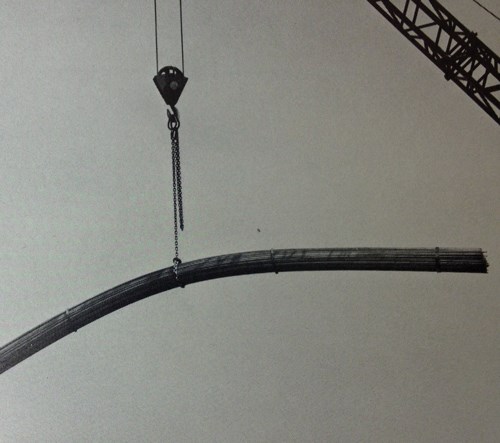Correct Handling Preserves Straightness
Straightness is critical for holding position and tolerances on today’s highly engineered medical, aerospace, automotive and electronic parts.
Straightness is critical for holding position and tolerances on today’s highly engineered medical, aerospace, automotive and electronic parts. Here are six ways that bars can lose their straightness.
Mechanical damage to an end. If the bundle is struck by a lift truck, or if the bars catch on a rack or table while being hoisted with the crane, this can cause the ends of the bars that are caught to be deflected out of the bundle and bent.
Improper blocking and support at mill or on truck. Cold finished barstock, especially smaller diameters, needs to be supported at multiple points along its length. This reduces the possible radius that the bundle can sag or droop between supports. The mills that I’m familiar with (PMPA Tech members) are pros and know the best way to support the product and package it securely. Reputable mills put more bands on smaller ID bar bundles to preserve straightness when needed.
Truck loading and securing. The binders used to secure the bars onto the truck can cause a permanent deformation if they are not matched up with the blocking beneath the bars. I saw a trucker once use a 4-foot piece of pipe as a “cheater” to secure the binding chains “one more notch.” You could hear the wood underneath the bundle being crushed. Chains are always bad news for cold-drawn bars, causing nicks, gouges and low spots.
Improper unloading. Putting a spreader bar on so that there are multiple points of support for the bundle is critical, especially with the smaller diameter bars and small bundles. I have seen shops unload bundles by using a single “hitch” at the approximate middle of the bundles. This causes a permanent camber over the length of the bars. Jerky crane lifts rather than smooth movements can magnify this effect.
Hand unloading or using a forklift. Small diameter bars especially can be bent by the way they are manually pulled out, lifted and carried, instead of being placed on a table or rack. Using a forklift can also cause bars to be bent.
Frequency of handling. If you are buying from a service center, the number of times the material has been handled can double or triple compared with a direct shipment from the mill. Given that you may be buying unbundled quantities, it is a fact that the number of lifts and handling increases dramatically with the additional destination of the service center, as well as in the act of splitting the bundle.
When you encounter bar straightness issues, characterizing the way the bar deviates from straightness can help you determine which of the above factors might be the cause.
— Precision Machined Products Association














.png;maxWidth=300;quality=90)


.png;maxWidth=970;quality=90)